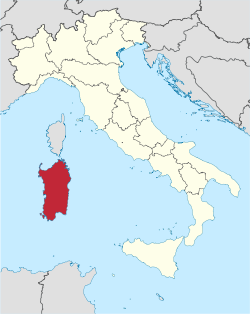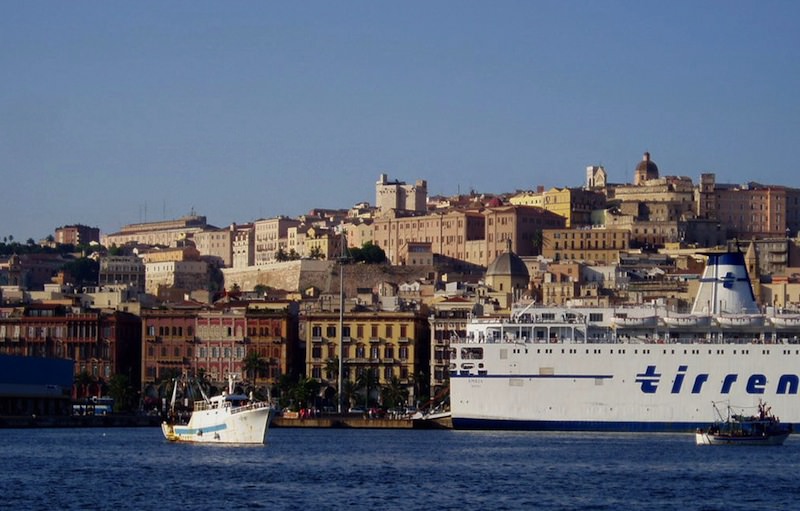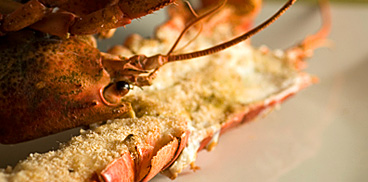The island of Sardinia lies off the west coast of Italy and is second in size to Sicily. It’s an often overlooked destination, but the island of Sardinia lures savvy travelers with its unspoiled beaches, varied terrain, abundant wildlife, rich cuisine and charming small towns.
What to Do and See in Sardinia
Nature is one of Sardinia’s biggest draws. The rugged coastline is home to several national parks and protected marine areas. At Capo Carbonara in the southeast, dolphins frolic in the surf while flamingos and sea birds perch on a small sandbar. Several companies will take experienced divers below the sparkling blue sea to explore ravines, caves and shipwrecked boats or swim past brightly colored native fish.
There are over 2000 kilometers of beaches in Sardinia, each one unique. The yellow dunes of Piscinas beach are home to deer, juniper, olive trees and sea turtles, while La Pelosa beach is known for its fine white sand and clear water that is ideal for snorkeling. Santa Margherita di Pula beach is one of the most popular and is a particular favorite of surfers. Along more rugged areas of the coast, you can explore sea caves like the magnificent caves of Bue Marino, filled with small fresh-water pools.
Adventure lovers can get their fill in Sardinia as well. Several mountain ranges criss-cross the country and offer activities like skiing, horseback riding, hiking, biking, rock climbing, and off-roading. The mountainous regions are ideal for those looking to view some of Sardinia’s wildlife and native plants as well. Animals like fox, deer, eagle and boar wander among prickly pear, lavender, thyme, juniper, and strawberry trees.
The Giara di Gesturi area is also home to the last wild horses in Europe. Forests and caves also dot the countryside, along with spectacular waterfalls like Villacidro Falls, Sos Molinos and Su Cologone. And several large lakes and lagoons are perfect for bird watching, boating, and fishing.
Sardinia was once an important place in the mining industry with several mines that have been preserved and are now open for tours. Iron working and the production of filigree jewelry and ceramic pottery were also traditional industries. There are shops all over Sardinia still producing pieces that make excellent souvenirs.
Where to Stay in Sardinia
The port city of Cagliari is Sardinia’s main city, though at about 160,000 people it isn’t quite a metropolis. The old city, called the Castello, is the main tourist attraction and is filled with ancient white lime-stone buildings and impressive cathedrals. The nearby Poetto beach features beautiful white sand and a vibrant nightlife. The ancient city of Sassari is home to an impressive collection of art museums while the modern town of Olbia is home to trendy boutiques and restaurants. Alghero is the place to go for fine cuisine. Its Catalan influence from Spain left a mark on the food, which relies heavily on seafood.
These cities offer all the modern conveniences you need, along with plenty of choice for accommodations in any price range. For an even more off-the-beaten-path experience, head to one of the island’s many small towns and villages. Stay in Tortolì, known for its wine production, or relax in the mountainous village of Desulo. If your main destinations are Sardinia’s islands, you can charter a sailboat and sleep on board.
What to Eat and Drink in Sardiana
As elsewhere in Italy, food is a large part of life in Sardinia. Olive groves are found all over the island and the oil is used liberally in Sardinian cooking. The wild boar that roams the hills is often cooked by burying and roasting it underground. It is typically enjoyed with some of the many varieties of wild mushrooms that grow in abundance. Seafoods like swordfish, lobster, tuna and sea urchin also figure prominently into the Sardinian diet. Juniper berries, myrtle, saffron and fennel spices are often used to flavor dishes and the island also produces a number of unique breads. Carasau, often called music paper for its thinness, is served all over the island while hard-crusted Coccoi bread is artfully sculpted into various intricate designs and reserved for special occasions. Almonds and Nougat are the most popular dessert ingredients.
The climate and many days of sunshine, makes Sardinia an ideal wine-growing area. The grape names and wine varieties produced on the island may not be familiar, but the fruity and fragrant wines are well worth a try. Sardinia also produces several signature liqueurs as well, such as Aquavit (like grappa), Limoncello, and Mirto, a purple liqueur made from the myrtle berry.
Getting There and Around
Direct flights run from New York to Cagliari, or you can connect in Rome via a discount airline such as Ryan Air. Buses, trains and boats connect main cities but if you plan to venture to more rural areas and small towns, you will need to rent a car.
Find more information at Sardinia’s Tourism website
Written by Katie Hammel for EuropeUpClose.com





Egle
Monday 24th of May 2010
hej, I would like to inquire does anybody of you knows some places where two poeple in August could stay cheap in Alghero for 3 nights ? Thanks for information.
car hire alghero airport
Thursday 23rd of July 2009
Sardinia is a cool place ,especially the northern part is very beautiful.
Rachel
Wednesday 1st of July 2009
Sardinia is lovely! The south of the island is generally quieter and less built up, so if you want a peaceful, relaxing and 'get away from it all' holiday, then the south is ideal. There are also some fantastic beaches around the coastline.